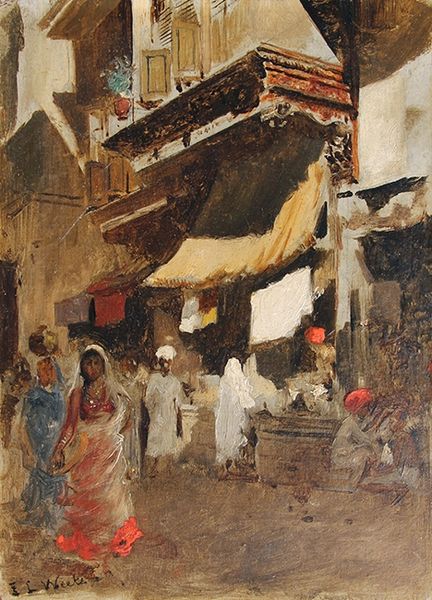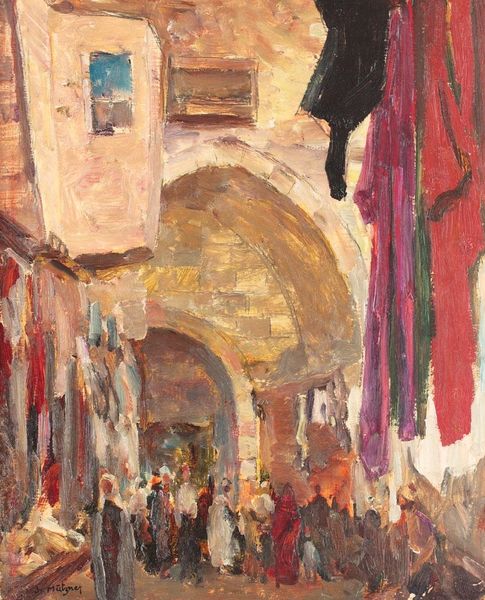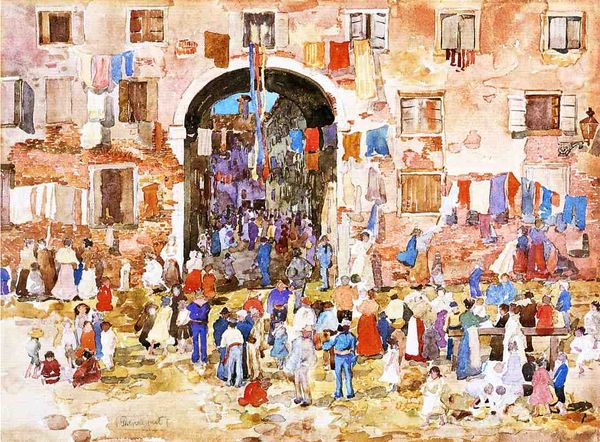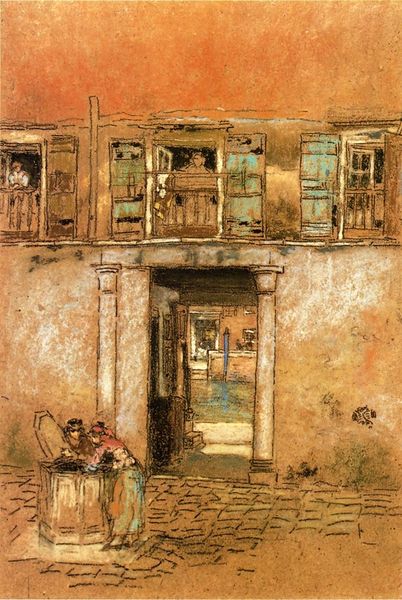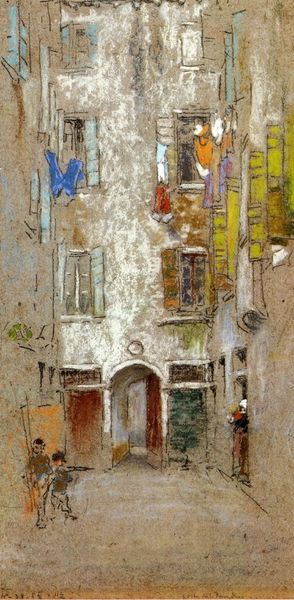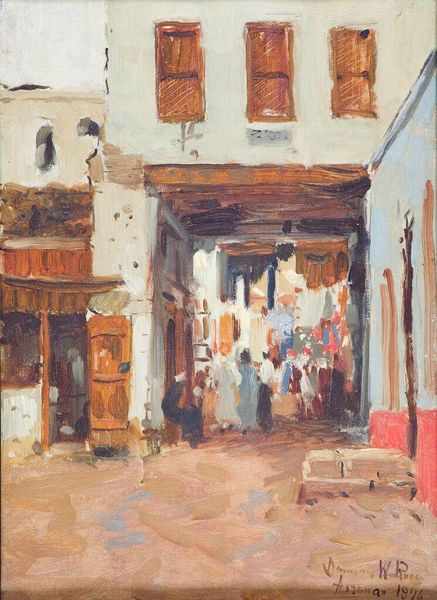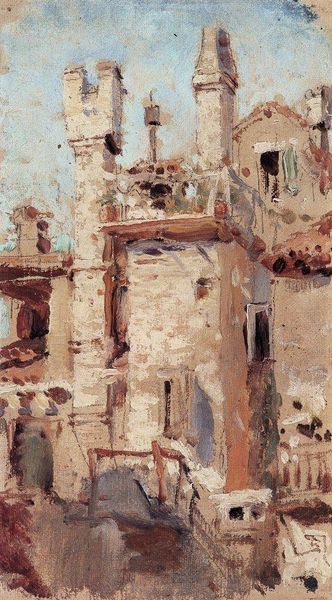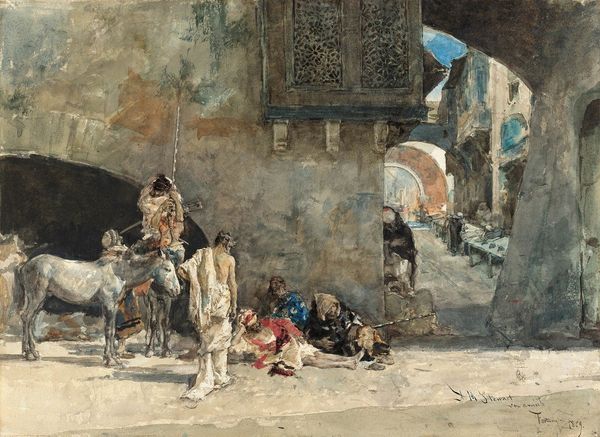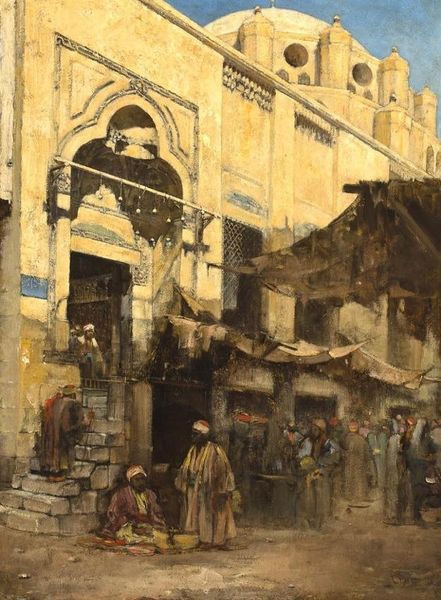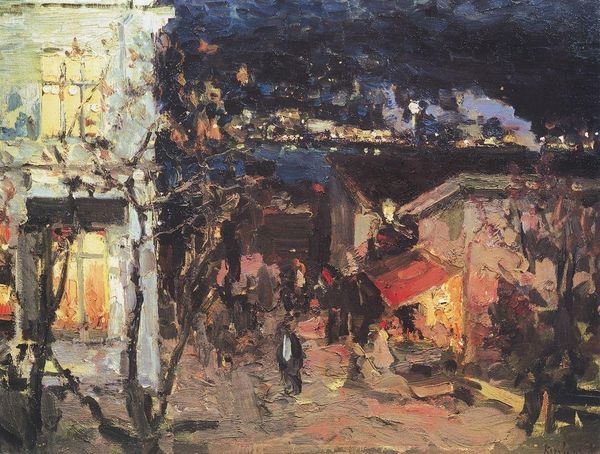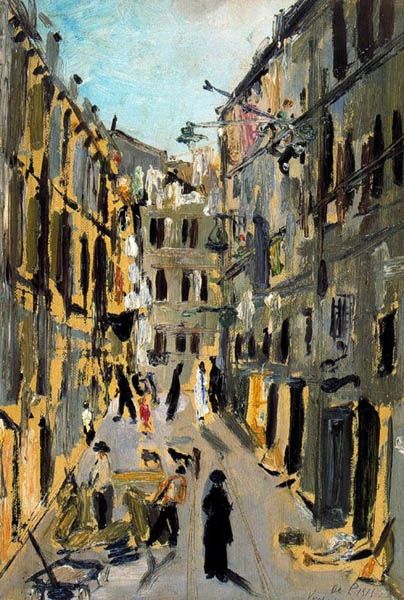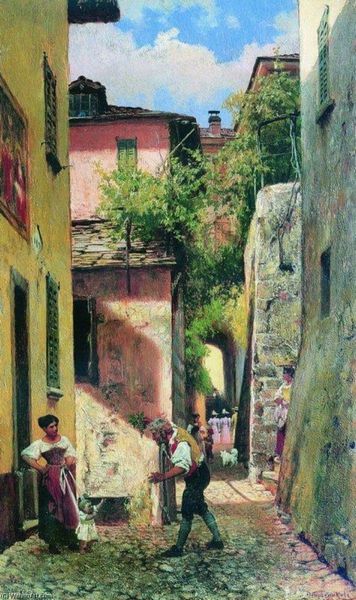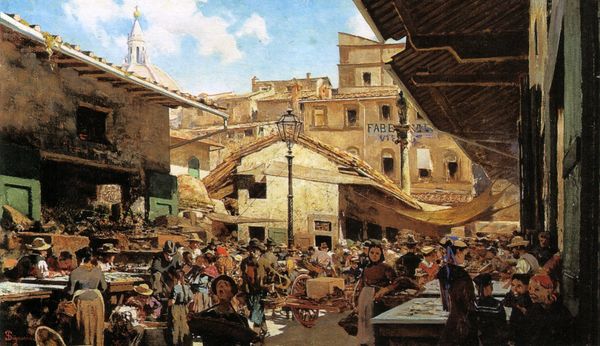
painting, plein-air, watercolor
#
painting
#
impressionism
#
plein-air
#
oil painting
#
watercolor
#
derelict
#
cityscape
#
genre-painting
#
watercolor
#
realism
Copyright: Public domain
Curator: This watercolor work, “Neapolitan Alley”, is by the painter Vincenzo Irolli, capturing a bustling city street scene. What's your immediate take? Editor: It's dynamic, though dreamlike. The vibrant wash of colors, particularly the earthy tones contrasted with splashes of blue and green, give a fleeting impression of reality. The impressionist technique dissolves concrete details and forms, leaving a soft visual echo in their wake. Curator: I see it as a reflection on the living conditions of Neapolitan society and Irolli's class affiliations. He was not born in poverty and might romanticize the destitute. It brings forward considerations regarding access to materials, such as high-quality paints, compared with laborers or peasants who would have lived in the scene being painted. Editor: Interesting perspective. Structurally, notice how the artist has arranged elements. The composition is divided into distinct, vertically-oriented areas with flat perspective and is full of different shapes. We also get that great movement between the lighter and darker areas. Curator: And beyond that, it brings the working class to a popular art space where the audience often benefits from those labors without being constantly aware of them. How much did the canvas or watercolor affect these people when so many walls, clothes, or foods were direly needed? It speaks to a global disparity still with us today. Editor: But shouldn't we consider how that fleetingness, rendered by the materiality of the paint itself, captures a sensory moment? Note that with very thin materials, Irolli’s approach is rather flat, especially the figures which appear undefined but blend into their surroundings perfectly and are still very present and dynamic! Curator: It also shows Irolli's privileged position within that space and his consumer status by highlighting the sharp contrast with the subject matter which portrays workers and city occupants who deal directly with materials like fabric and fresh food in their day to day life, to put bread on their tables. It is a look into labor itself, in which artistic work must also be categorized. Editor: Perhaps both readings hold true. The artwork prompts us to consider artistic execution and structural integrity, but also the complex relations that produced its creation and potential reach. Curator: Exactly!
Comments
No comments
Be the first to comment and join the conversation on the ultimate creative platform.
